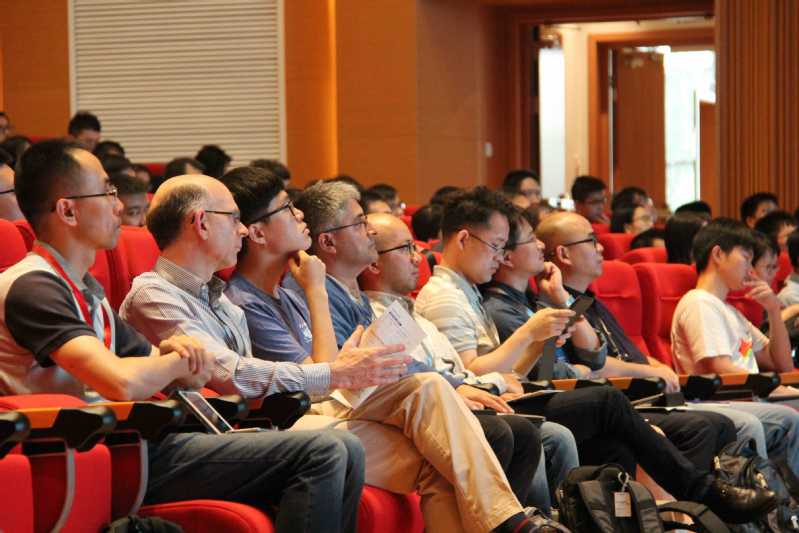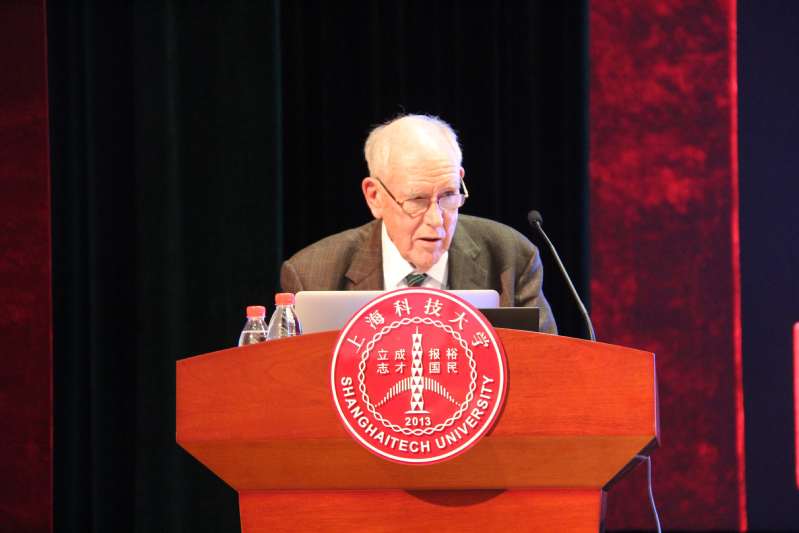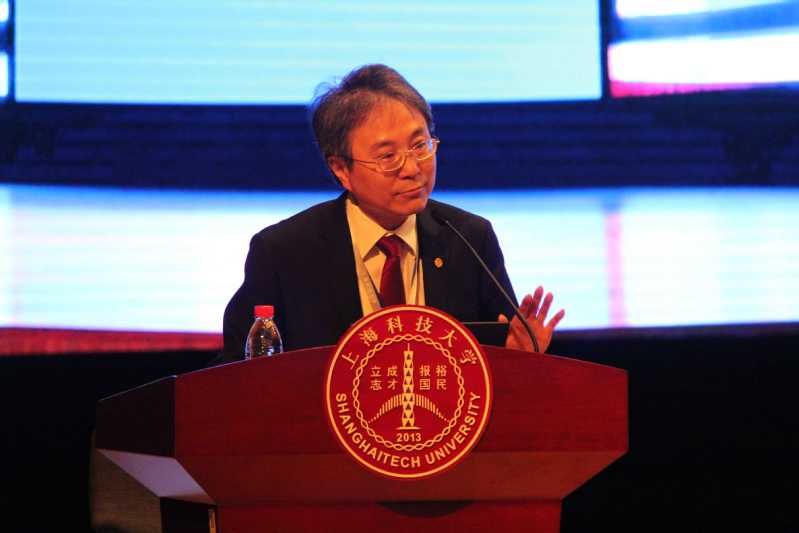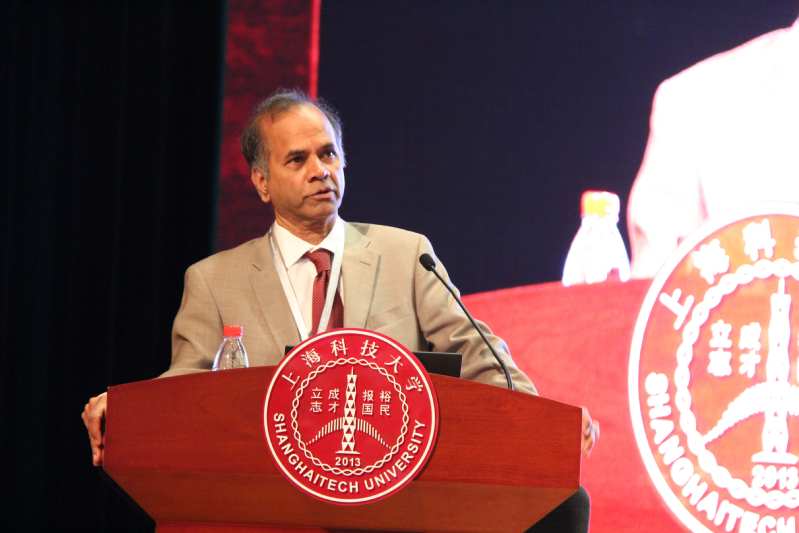The Annual ShanghaiTech Symposium on Information Science and Technology (ASSIST) 018 was held at ShanghaiTech from July 2-4, 2018.
Focusing on artificial intelligence and computer vision, the symposium aims to provide a forum on state-of-the-art information technology that is “international, high-level, and application-oriented.” Nearly 800 people from both academia and industry participated in the symposium and many top scholars as well as several industry researchers from companies such as Microsoft were invited to share their latest research and experience in AI and vision.
Professor Ivan Sutherland (Portland State University), a member of the US Academy of Engineering and US Academy of Sciences and a Turing Award winner, delivered the keynote address. Professor Sutherland invented the revolutionary computer program Sketchpad while doing his PhD and pioneered the field of computer graphics, which earned him the Turing Award in 1988, the highest honor in computer science. In his keynote speech entitled Stop the Clock, Professor Sutherland discussed three important paradigm shifts in the history of computation, namely the rise of personal computing, the invention of 3D computer graphics, and the development of integrated circuits. He also highlighted the upcoming shift in computing — from the now widely used clocked circuits to self-timed asynchronous circuits in the future. Asynchronous circuits have many key advantages, including energy efficiency, design modularity, and scalability. At the same time, asynchronous circuits face many challenges, including the need to change the synchronous way of thinking about computation for almost all computer scientists.
24 internationally renowned AI researchers were invited to give talks, including nine IEEE Fellows and four NSFC Distinguished Young Scientists / Yangtze River Scholars. Professor Rama Chellappa (ACM/IEEE Fellow) from the University of Maryland shared his latest research on deep representation, adversarial learning, and domain adaptation of images and videos; Professor Alan Yuille (IEEE Fellow) from Johns Hopkins University discussed three major challenges in computer vision – sensitivity of deep networks to adversarial attacks, limited supervised training data, and how to couple deep networks with traditional machine learning methods – and introduced how to solve the above problems using the latest deep learning technology; Professor Mark Johnson (ACL Fellow) from Macquarie University analyzed the impact of deep learning on the field of natural language understanding. Through several case studies, he pointed out that deep learning has the advantages of being fast, accurate and economic in constructing NLP applications, but traditional linguistic knowledge is still useful to NLP systems in the aspects of representation, evaluation and training data generation. Many other scholars such as Professor Hong Jiang (University of Texas at Arlington, IEEE Fellow), Professor Rene Vidal (Johns Hopkins University, IEEE Fellow), Professor Wei Wang (University of California, Los Angeles, ACM/IEEE Fellow), and Professor Dong Xu (University of Sydney, IEEE Fellow) also led in-depth discussion of the latest progress in AI algorithm design, hardware-software co-design, medical image understanding, biomedical informatics, real-world scene analysis, and audiovisual computing in virtual reality.
At the symposium, well-known domestic scholars such as Wang Liang (Institute of Automation, Chinese Academy of Sciences, Distinguished Young Scientist), Wang Yongtian (Beijing Institute of Technology, Yangtze River Scholar / Distinguished Young Scientist), Yang Xiaokang (Shanghai Jiao Tong University, Yangtze River Scholar / Distinguished Young Scientist), Zhou Jie (Tsinghua University, Distinguished Young Scientist), Cheng Mingming (Nankai University), and Xue Xiangyang (Fudan University) delivered wonderful talks on the research topics of image segmentation, image compression, neural network structure design, multi-task learning, augmented reality display, and dynamic behavior analysis. Industry researchers including Hua Gang (Chief Scientist of Microsoft Research, IAPR Fellow), Sun Jian (Chief Scientist of Face++), Shen Dinggang (United Imaging, IEEE Fellow), Xiao Jing (Chief Scientist of Ping An Technology), Jia Jiaya (Tencent outstanding AI scientist, IEEE Fellow), and Yan Shuicheng (Chief of Qihoo 360 AI Research Institute) shared their experience in the success and challenge of the industrial application of deep learning, human-like visual perception, medical image processing, image generation, etc.
In addition to the wonderful talks, the symposium received more than 100 posters from the participants, among which 30 were selected for display. The poster authors also participated in a poster presentation competition, and our invited speakers selected one best poster and two runner-up posters. Our undergraduate student deeply impressed the symposium speakers and attendees.
Since 2015, the School of Information Science and Technology of ShanghaiTech University has held annual symposiums on information science and technology that focused on the frontiers and hotspots of the field and invited top domestic and international scholars to share their latest breakthroughs in the field of information science and technology. The symposiums have also received strong support from well-known domestic and international IT companies. This year, the online live broadcast of the symposium attracted tens of thousands of watchers over the three days of the symposium.





